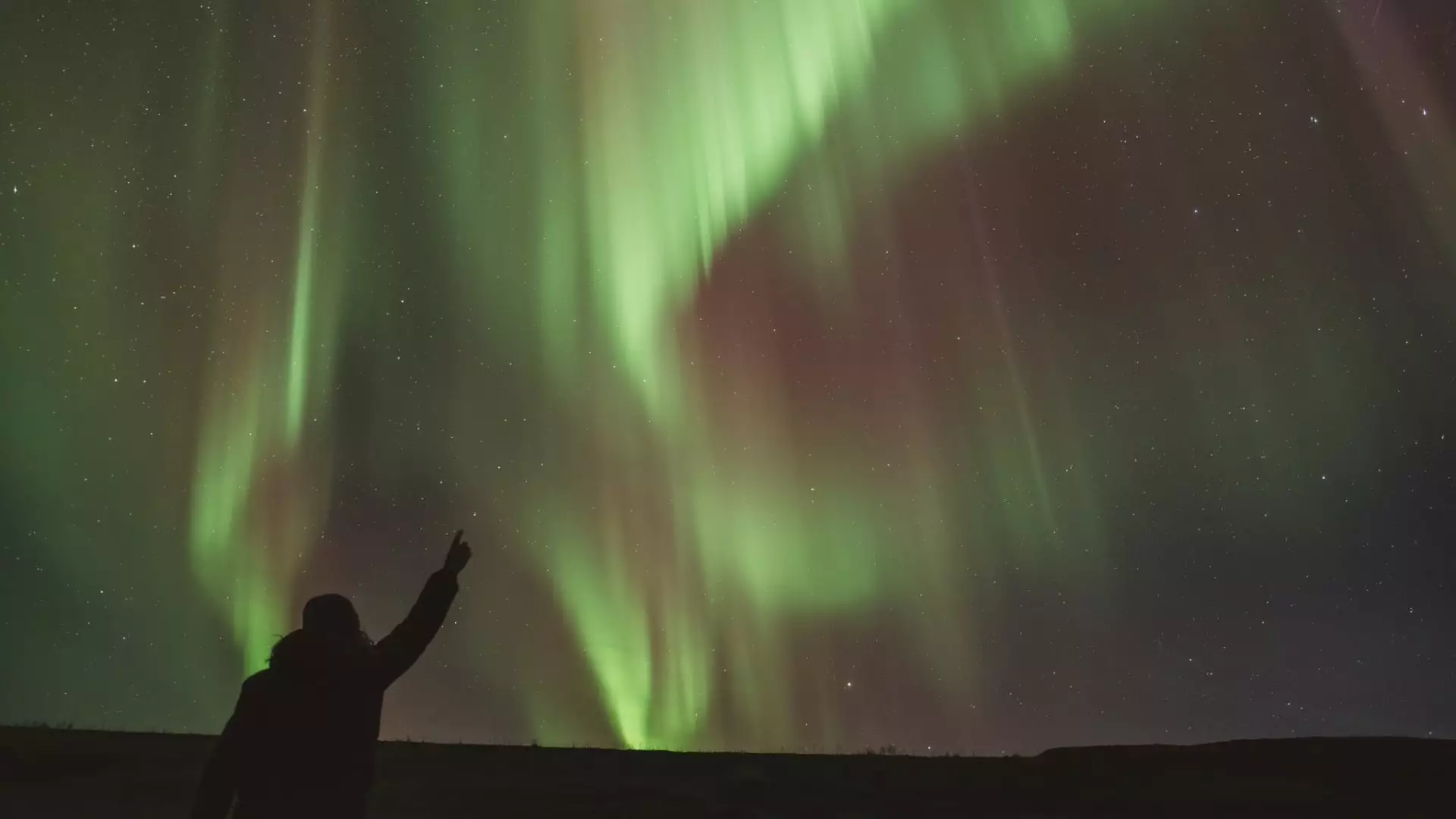Renowned photographer Rebecca Douglas is no stranger to the breathtaking beauty of Iceland, having traversed its landscapes an impressive 29 times, with plans set for her 30th journey. Each expedition is crafted around one singular objective: to capture the mesmerizing aurora borealis, commonly known as the Northern Lights. This ethereal display, characterized by vibrant hues of green, purple, yellow, and blue, results from solar particles colliding with gases in the Earth’s atmosphere. Douglas has dedicated herself to photographing this natural wonder since 2010, immersing herself in the unique dynamics of light and its interplay with the night sky.
As we move into a solar cycle poised at its peak, experts predict an explosion of auroral activity over the next four years, underscoring the increasing allure of this natural phenomenon. For Douglas, whose home base is in Kent, UK, Iceland is not her only destination; she annually seeks out the Northern Lights in Finland and Norway as well. Interestingly, she has recently observed this enchanting spectacle even from the tranquil borders of the English countryside, reflecting a growing accessibility to nocturnal experiences.
Douglas might not have been fully aware that she was partaking in a burgeoning travel phenomenon known as “noctourism.” Defined by its emphasis on experiences during night hours, this trend has gained traction, especially as more people lean into nighttime explorations rather than traditional daylight activities. Booking.com has highlighted this shift, projecting noctourism as one of the leading travel trends for 2025, emphasizing a collective desire to escape the hustle and bustle of daytime crowding in favor of the enchantment that the darkness can offer.
A recent survey encompassing over 27,000 travelers reveals that nearly two-thirds of respondents have considered destinations that thrive under darker skies. These destinations offer various nighttime activities, such as stargazing, witnessing rare cosmic events, and tracking constellations, underscoring a collective yearning for unique voyages that speak to the soul. Nighttime city tours, nocturnal wildlife interactions, and gourmet experiences, such as moonlit picnics, exemplify how diverse and rich the nocturnal travel landscape has become.
Luxury travel operators note a dramatic increase in demand for nocturnal experiences; Wayfairer Travel reported a 25% uptick in inquiries for Northern Lights viewings in Norway and Iceland alone. Additionally, enthusiasts can engage in night diving in exotic locales such as the Great Barrier Reef and the Red Sea or embark on starlit adventures through Zambia and Kenya to observe wildlife, bringing even more intrigue to this nighttime travel movement.
The New Frontier of Dark Sky Destinations
As the rejuvenated interest in astral experiences grows, a burgeoning trend among travelers involves seeking out lesser-known spots that promise unparalleled views of the heavens. Industry experts suggest that the quest for unique and transformative experiences will shape travel significantly, especially for those fascinated by celestial wonders. Locations like Greenland’s High Arctic are anticipated to become new sought-after destinations, appreciated for their pristine, light-pollution-free settings.
Moreover, accommodations across the globe are adapting to this shift. From stargazing resorts in Hawaii to venues in Austria touting their celestial views, travelers no longer need to venture far-flung distances to experience the mesmerizing night sky. Significant meteorological events, such as the total lunar eclipse on March 14, offer additional chances for night sky aficionados to witness cosmic displays, appearing across extensive swaths of the Americas, Western Europe, and Africa.
For Douglas, meticulous planning is essential to optimize her photography endeavors. She prefers to avoid packaged hotel deals, opting instead for personalized arrangements that allow her greater control over the experience. This is particularly important considering that many new participants in noctourism inadvertently contribute to light pollution with their electronic devices. By seeking accommodations that are remote and devoid of artificial light, she enhances her ability to capture the stunning auroras.
Additionally, Douglas considers the lunar phases in her planning, with the weeks surrounding a new moon being ideal for maximizing darkness—thus elevating both the brightness of the aurora and the clarity of other celestial phenomena. This focus on darker skies makes it easier to appreciate the Milky Way’s resplendent display, with its captivating cascade of stars.
Building upon her skillset, Douglas has developed an online course specifically designed to assist others eager to delve into photographing the aurora borealis. As part of her nighttime photographic excursions, she also captures elusive noctilucent clouds and polar stratospheric clouds, showcasing her mastery of the night. Despite extreme temperatures and elongated hours spent in pursuit of the perfect shot, she finds these endeavors to be a profound honor rather than a chore.
In a world increasingly enamored with capturing fleeting moments, there lies an unparalleled thrill within the dark sanctuary of nighttime travel. As noctourism continues to flourish, adventurers like Rebecca Douglas embody the spirit of exploring not just the world, but the very tapestry of the universe that unfolds under the shimmering night sky.


Leave a Reply